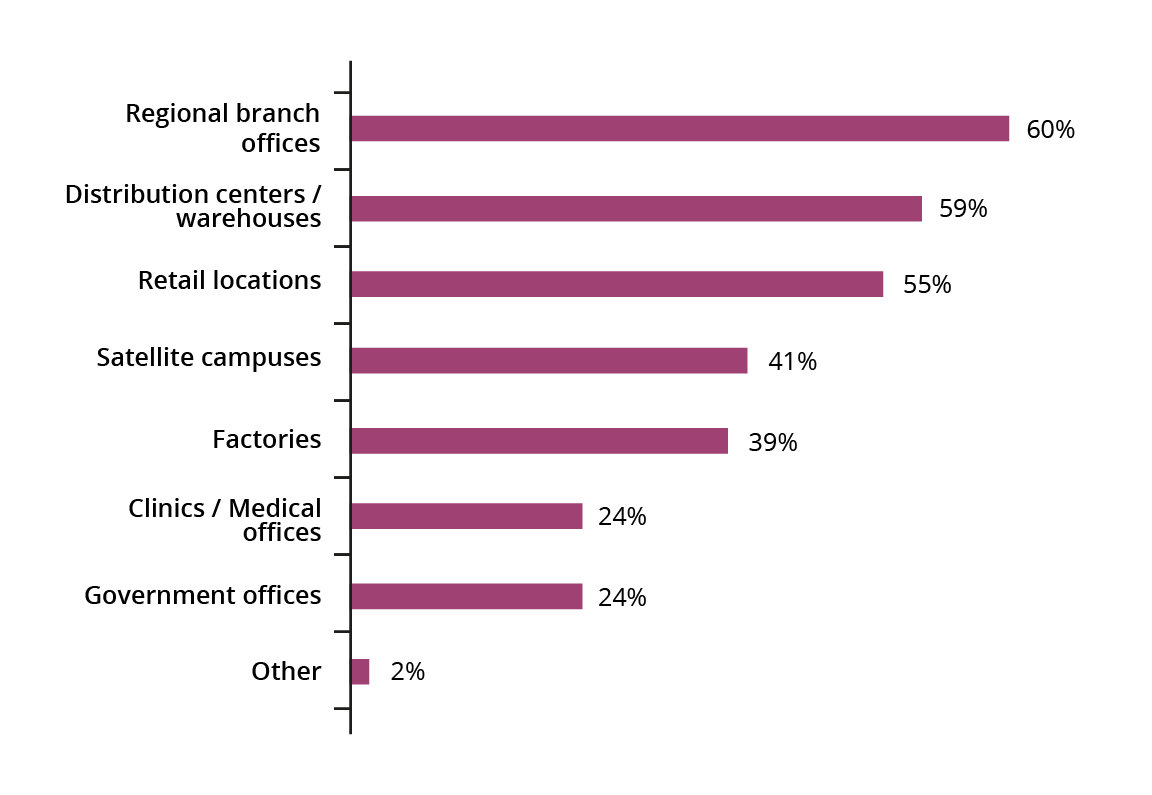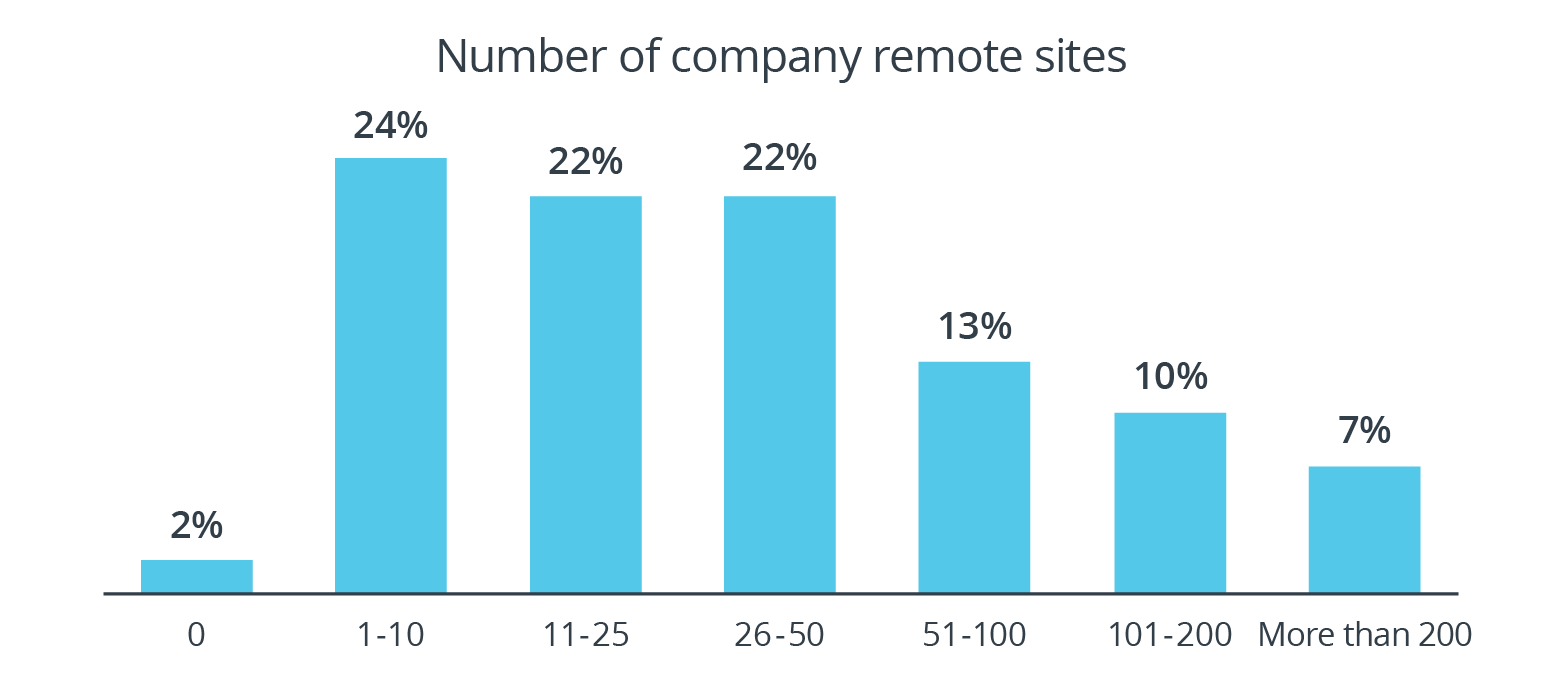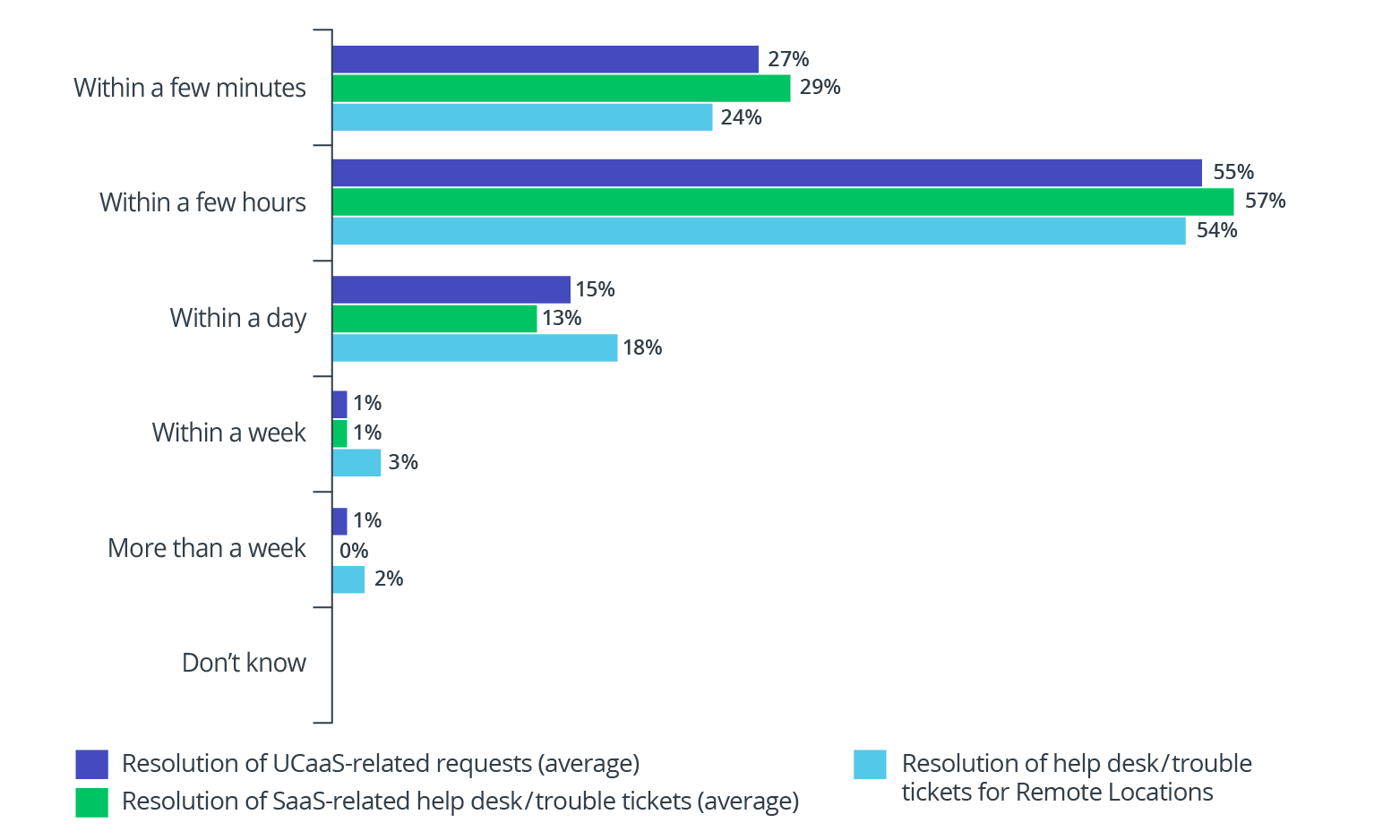UCaaS Tools Are Essential for Remote Sites—Until They Fail
Observability and continuous monitoring across entire network ecosystem is crucial.

“Out of sight, out of mind” might be a charming notion when it comes to dealing with household chores, but when IT professionals are attempting to ensure unified-communications-as-a-service (UCaaS) tools at remote sites are operating flawlessly, lack of observability can flat-out ruin your day.
As businesses increasingly rely on connectivity with geographically disbursed facilities, including remotely located employees, dependence on UCaaS tools, as well as software as a service (SaaS), has only grown more prevalent. With this in mind, NETSCOUT’s annual UCaaS Survey took a closer look at how remote sites are impacting the challenges faced by IT professionals.
This year’s survey examined the use of UCaaS and SaaS tools at remote sites, such as factories, warehouses, and retail locations, where application health is typically more challenging for IT to monitor and troubleshoot. The research showed that the more remote sites an enterprise supports, the more UCaaS platforms tend to be in use.
The Bigger the Org, the Larger the UCaaS Need
The survey found that most enterprise organizations (55 percent) support 26 or more remote sites. These sites vary in usage. 60 percent reported their remote sites were for regional branch offices, while 59 percent were distribution centers/warehouses, 55 percent were retail locations, 41 percent were satellite campuses, 39 percent were factories, 24 percent were medical offices, and 24 percent were government offices.

Another interesting trend revealed by the NETSCOUT survey is a correlation between a company’s annual revenue and the number of remote sites it operates. Unsurprisingly, 56 percent of larger companies generating more than $10 billion in annual revenue had 51 or more remote sites. Similarly, the data shows that 63 percent of companies with 10 or more UCaaS platforms support more than 51 remote sites.

With so many remote sites in play, IT teams have their hands full ensuring UCaaS tools are available and working at peak performance. Anything less is bad for business and reflects badly on IT.
Failure Is Never an Option
When the daily routines at factories and warehouses, for example, are interrupted due to technical issues, these events can significantly delay production and distribution. The same can be said for nearly any remote facility. When retail offices can’t connect with headquarters, inventory replenishment can be interrupted, jeopardizing potential sales. When doctors can’t connect with other doctors or gain access to test results through UCaaS, medical treatments can be delayed, potentially impeding diagnosis and treatments.
Excessive downtime, with either UCaaS or SaaS tools, can affect efficiency, increase production expenses, and adversely impact customer/patient/constituent service, which in turn can tarnish an organization’s image and reputation—not to mention harm the bottom line.
Making matters more challenging, remote sites often lack on-site IT teams, further complicating and prolonging the troubleshooting process. This was made painfully obvious during the recent IT outage in mid-July when remote devices required manual reboots following the CrowdStrike outage and recovery was elongated for companies that lacked local IT staff at remote locations.
The survey shows how the lack of IT resources can delay response times when UCaaS platform problems specifically occur. More than three-quarters of technology issues reported to IT help desks related to remote sites take at least a few hours to resolve, according to the survey. 18 percent reported issues take up to a day, while 3 percent indicated it took a week, and 2 percent said it took more than a week to resolve issues at remote sites.

This implies problems at remote sites are at least a little more challenging to address than more standard SaaS and UCaaS-related technology issues reported at central facilities. It is little wonder that the survey revealed 76 percent of IT teams take from a few hours to as much as a week to resolve UCaaS issues in central offices, while 71 percent indicated it takes the same amount of time to resolve SaaS-related issues. Simply put, remote sites present greater challenges when it comes to resolving issues for obvious reasons.
Observability is Essential, Particularly When Remote Sites Are Involved
For IT teams to deal with UCaaS and SaaS issues, observability is essential. This is especially true when remote sites are involved. In these cases, the overwhelming amount of network traffic around UCaaS and SaaS solutions doesn’t pass through corporate data centers, making it far more challenging for IT to manage. Corporate data centers offer a good measure of observability, and with network and application performance management solutions in place, IT has the upper hand when it comes to identifying and resolving issues. But troubleshooting becomes far more complicated and difficult as users at remote locations attempt to communicate with UCaaS platforms across the internet.
Without the ability to continuously monitor the entire ecosystem, IT is left in the dark trying to identify the source of problems that may be occurring in any number of different locations or across multiple vendors. As a result, user experience, business continuity, and productivity are at risk.
What’s needed is vendor-independent observability across the entire communications ecosystem. Armed with end-through-end visibility, IT can perform proactive performance monitoring to pinpoint the true root cause of problems. NETSCOUT’s nGenius Enterprise Performance Management solution leverages both packet-level details and synthetic business transaction testing to effectively monitor network and application performance in any location. This empowers IT to reduce mean time to repair (MTTR), eliminate visibility gaps, and help to manage trouble tickets more quickly and efficiently, ensuring exceptional user experiences and smooth daily operations. Having “eyes” on the IT environments at remote locations that lack full-time IT staff is the best alternative to addressing performance and availability vulnerabilities.
Learn more about remote-site trends in our comprehensive report “UCaaS and Today’s Enterprise: The True Cost of Outages and Help Desk Support."